Setting Benchmarks: Tribal kids in far flung areas are getting educated in unique ways in the COVID-19 pandemic
Banyan trees, loudspeakers, song, dance and motorcycles are their teaching aids; educators in rural tribals areas are innovating, experimenting and educating children without a smartphone in sight.

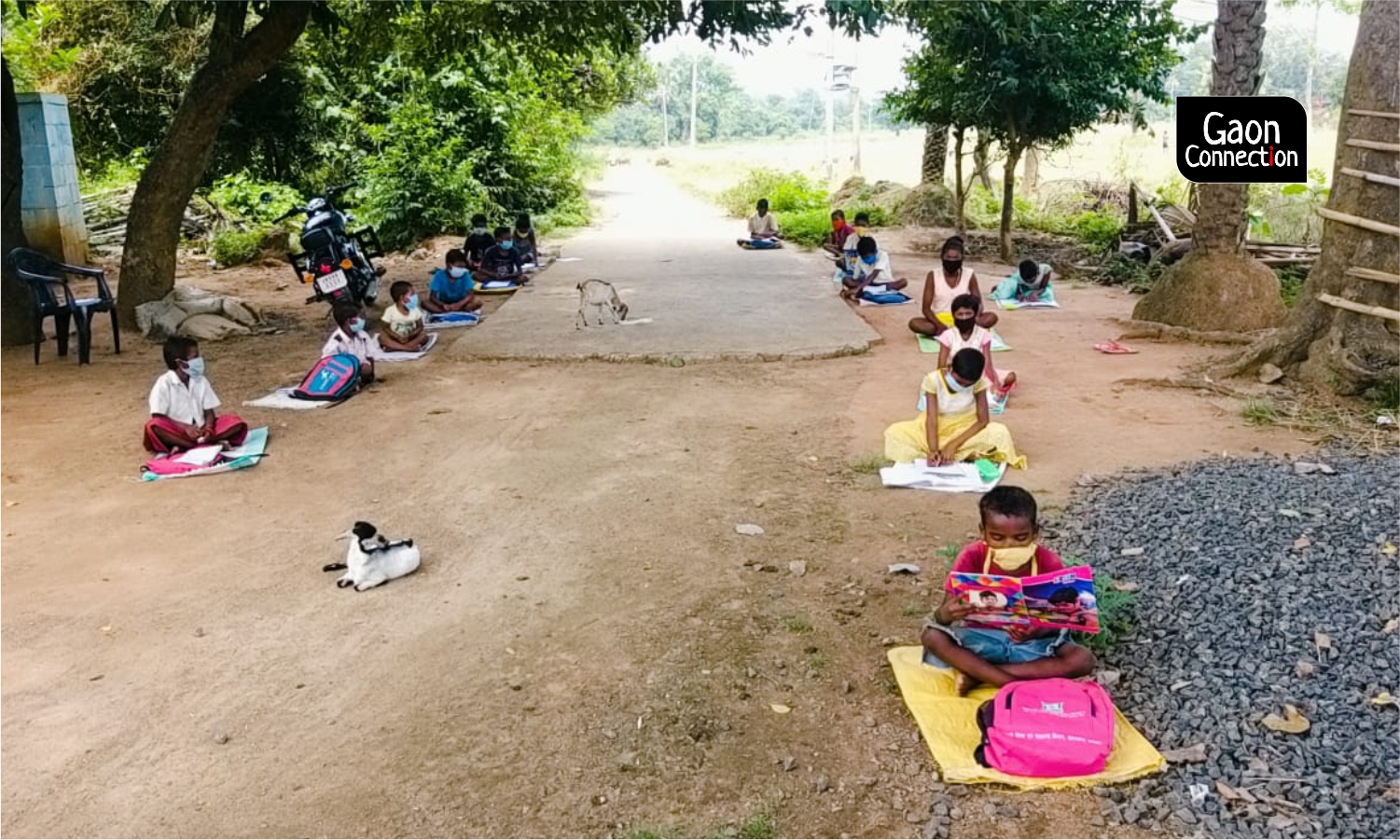
The ‘classrooms’ are usually under a tree or in the village square or any empty space and quickly take on the appearance of a carnival. Photo: Shyam Kishore Singh Gandhi.
Shala suru jhali, shala suru jhali… (school has begun, the school has begun) goes the peppy Marathi song as kids come skipping in, in ones and twos to the open area and settle into the circles drawn on the ground.
It is 8 am and children clutching their notebook and pencils are getting ready for their first lesson of the day across 40 villages in Mokhada block of Palghar, a predominantly tribal district, in Maharashtra, 114 kilometres (km) north of Mumbai. Gradually, the giggles and chatter subside, and with their heads cocked to one side, they start to listen to their teacher, who they respectfully address as Speaker Dada or Speaker Tai.
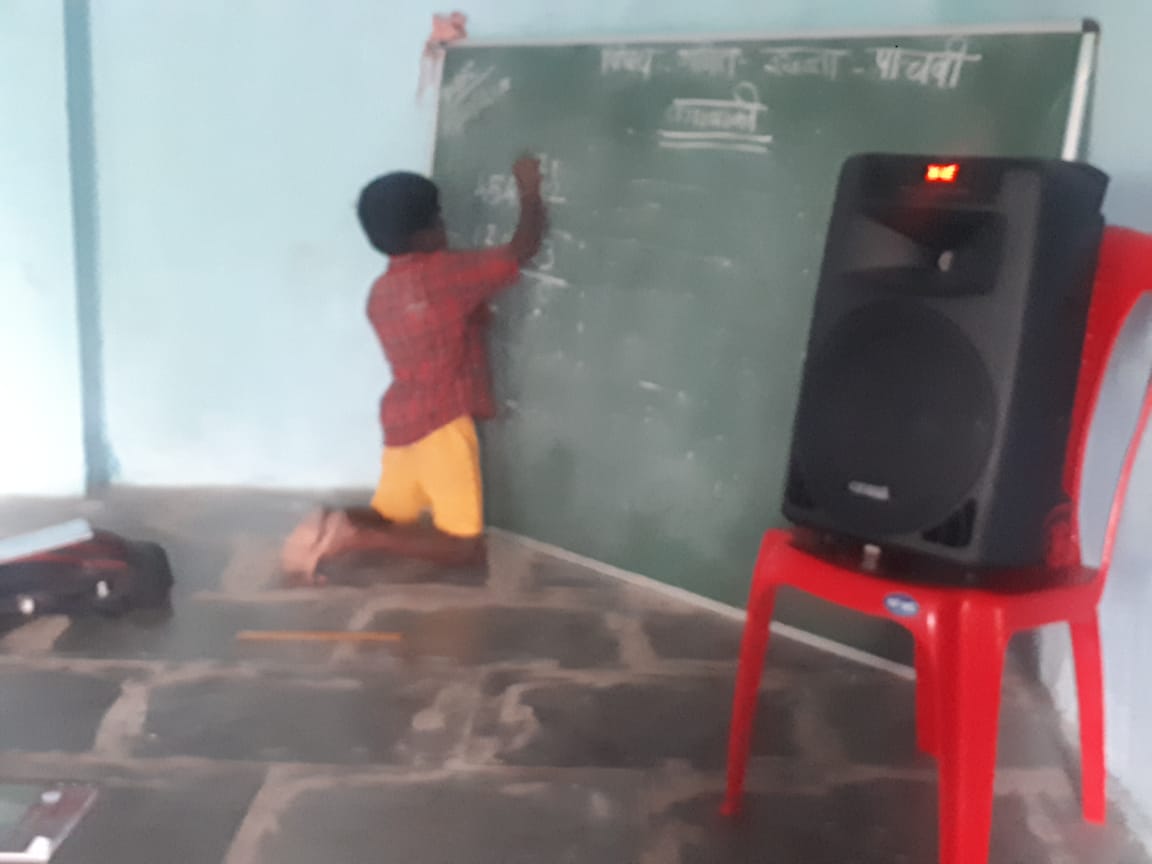
“That is how they address the loudspeakers, as dada or tai,” laughed Shraddha Shringarpure, who heads Diganta Swaraj Foundation, that is into tribal development with a focus on health, education, livelihood and good governance. The foundation, working for the last many years in Palghar, has been devising ways and means of keeping education alive in rural tribal areas in the pandemic. So while hi-tech has failed these children of far-flung villages, the loudspeaker invented in the 1800s is proving to be a boon. “We made hour-long audio capsules with interactive voiceovers that are played over the loudspeakers. The kids love their speaker tais and dadas and implicitly obey them,” she said.
Like Shringarpure, there are a number of social workers and educators who are fighting all odds and innovating to ensure kids in tribal areas are not left out while their counterparts in other regions of the country access education online through gadgets and high speed internet.
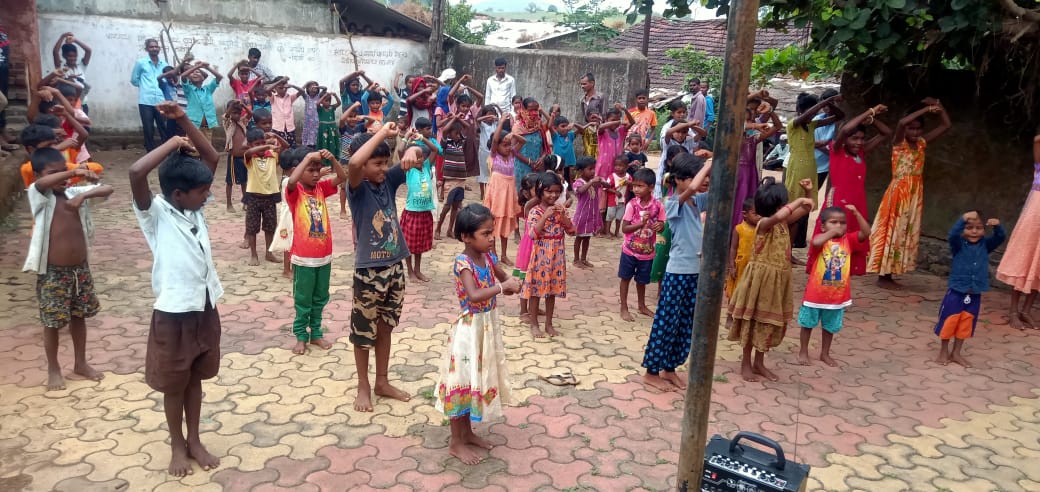
Not a level playing field
According to the Union ministry of education, it is estimated that there are 13.04 lakh rural schools in India. In the seven months since the pandemic began, education in these areas has been thrown completely out of gear, especially in the remote areas where, sometimes, there is no electricity, let alone internet connectivity.
“In the tribal Malkangiri district of Odisha, many villages do not even have electricity connection. They cannot even dream of education through smartphones and internet,” said Jayanti Buruda, a reporter on rural matters, from Odisha. In the last few months of the COVID-19 pandemic, she has travelled across several districts of the state to document how tribal kids and girls were dropping out of schools as they have no access to online education. In many places, parents are getting their daughters married off early.
“Girls are not even thinking of continuing with their studies. Many children who had begun to go to school may not come back to it,” Buruda said. “There is no money for food. Where will people get money to buy data for their phones, or why will they worry about their daughters’ education?” she asked.

According to Shringarpure, the pandemic has just shone the light on how wide the rift is between children in rural and urban areas, when it comes to amenities. “Most of these children in Mokhada are first-generation learners. Their parents are farmers or labourers. And where they live, there is no connectivity whatsoever, so we have to think of ways to get their education restarted without the benefit of ‘online’ classes and gadgets,” she said. The schools that are there are all shut or converted into quarantine centres.
“Nothing has shown up the inequality of education in our society as harshly as the pandemic,” Pankaj Pushkar, a politician who is associated with higher education in Uttarakhand, said in a panel discussion on Gaon Cafe. He pointed out the fallacy of looking at ‘education’ and ‘online education’ as the same thing. “If we normalise online education, then the divide is going to grow even further,” he warned. “Gender, economics, geographical locations, all these have to be taken into account. One size does not fit all.” he said.

A class apart
But, in the midst of all the desperation and misery the pandemic has brought about, there are pockets of hope, thanks to educators who are making a significant difference.
About 2,000 km away from Shringarpure’s workplace in Palghar, Maharashtra, is a village school in Dumka, a tribal district in Santhal Pargana division of Jharkhand, where a loudspeaker mounted on a Bullet motorcycle is making its booming presence felt. “I take a round around the villages on my Bullet motorcycle, and it does the job of a school bell, and the kids know the teachers are waiting for them,” Shyam Kishore Singh Gandhi, headmaster, UMS Bankati, in Dumka, told Gaon Connection.
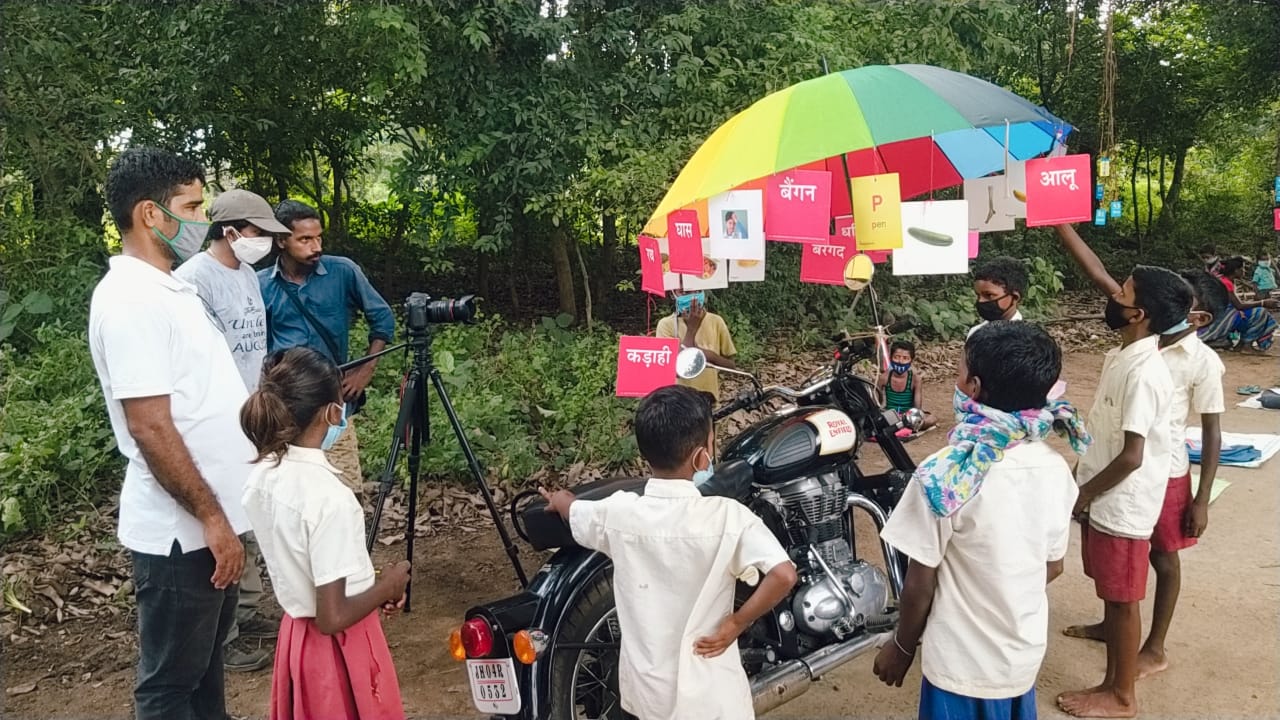
Gandhi wanted to get children back to some kind of learning. Seven teachers from his school, with the help of loudspeakers fixed to autos and tempos, visit nine villages and hold classes, observing all the physical distancing norms. “There are also ex-students of the school in the villages who are volunteers and 14 of them help us in our task, as their colleges are shut,” he said.
The ‘classrooms’ are usually under a tree or in the village square or any empty space and quickly take on the appearance of a carnival. As a teacher with a chart fixed to his bike teaches the respiratory system to four rapt students, a young girl swings lazily from one of the many roots hanging down from a giant banyan tree as others wait for their turn. The same roots are used to hang flashcards with alphabets and words printed in big letters.

“We are in a very poor quarter of Jharkhand. Most of the children are from tribal families. They cannot afford mobile phones, nor do they have reliable connectivity. And I firmly believe that the phone is not more important than the teacher,” said Gandhi. “We have a saying that children are like empty pots, and as teachers we have the responsibility of filling them with the right kind of information and knowledge,” he said. Gandhi and his team have ensured the children are enthused enough to continue coming to these innovative classrooms. “There is music, dance, games and, sometimes, even movies that we show them on a projector,” he said. A swept-clean cowshed doubles up as a ‘cinema hall’ where the children are shown films.

The community cares
A big factor in the success of these outdoor classrooms is the camaraderie in tribal villages. “As soon as they come to know that we are beginning classes, villagers voluntarily sweep and clean up the area where we set up, someone bringing us chairs, others helping out with the children. There is a sense of apnapan (ownership),” said Gandhi with pride.
Shringarpure couldn’t agree more. “When we put up the loudspeakers, people living around there at once swept their verandas so that children could sit there and study too,” she said. Since their team is small, wherever there were no teachers available, villagers took up the responsibility of playing the lessons on the loudspeakers.
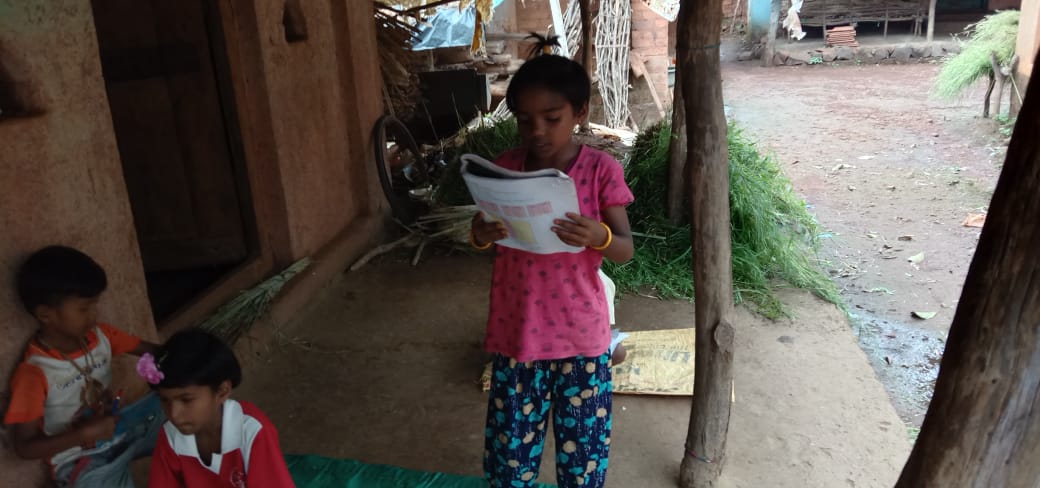
Meanwhile, several hundred km away in Tamil Nadu in south India, Vidyavanam, a CBSE school for tribal children, in village Anaikatti, about 560 km from from the state capital Chennai, has enlisted the help of its senior students to teach the younger children in their respective villages. “Children from around 20 villages study at our school. Ever since the schools shut down, we are trying to see how we can keep the learning process going,” TM Srikanth, principal of Vidyavanam, told Gaon Connection. Teachers teach the children in the village where they reside. In those villages where there are no teachers, children from the senior classes of Vidyavanam have taken over.
“We take classes six days a week, except on Sundays, from two to four in the afternoon. We have a big village community hall where the children gather for the classes,” Saranya Vinayagan, a 16-year-old class 12 student of Vidyavanam told Gaon Connection. Along with Vinayagan are six other class 11 and 12 students, belonging to the Irula tribe, who teach the children at Vadakalur village.
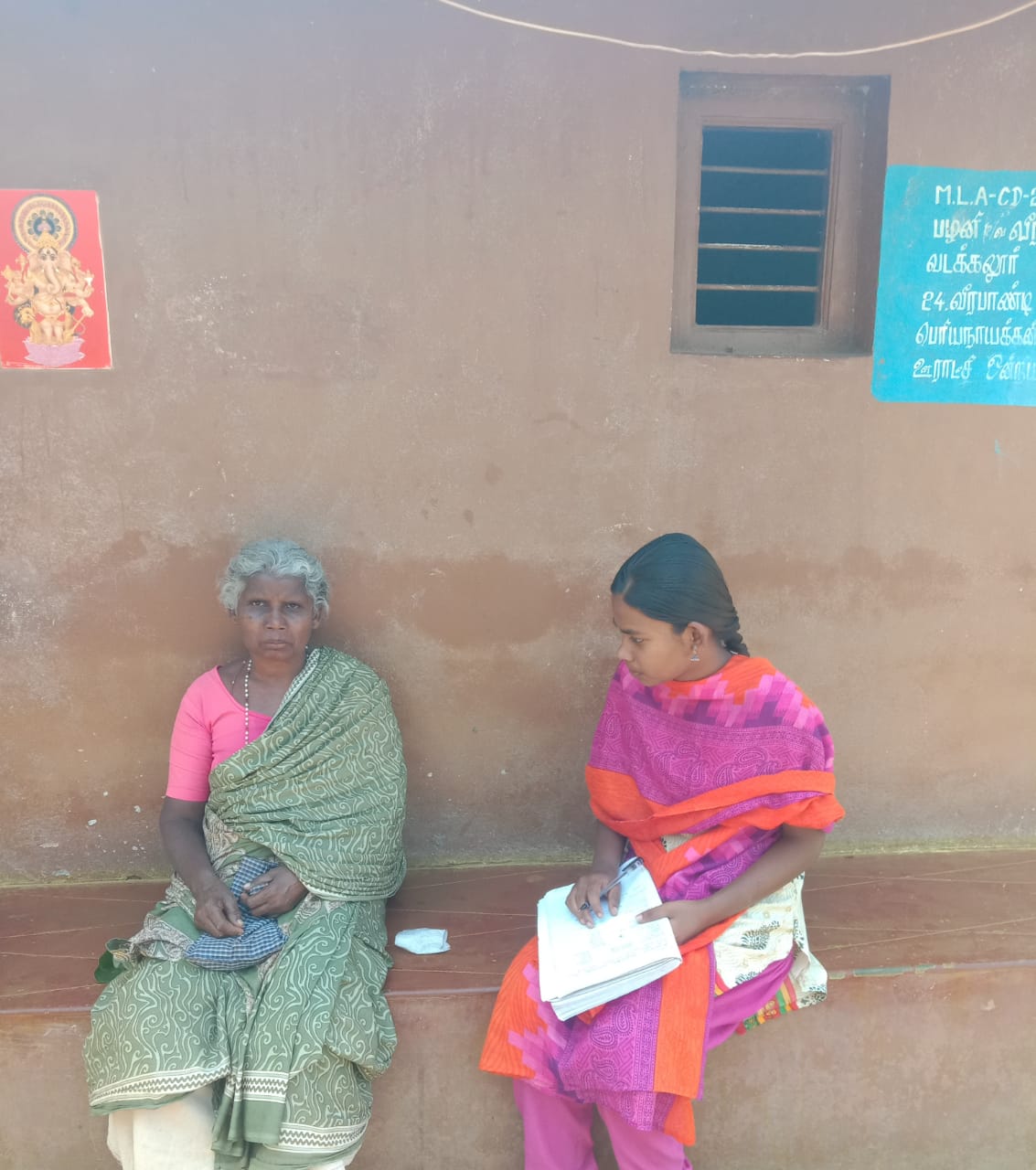
At the moment the children are engaged in a project on ‘drought’. They ask the elders of their village about their experiences of drought, and how they tackled it. “The children gather information and also bond with their grandparents and learn from their wisdom,” said Vinayagan, who wants to study psychology. Any child from the village is welcome to join the class, not just the ones from Vidyavanam. When Gaon Connection spoke to Vinayagan, the children were singing an old favourite song about neighbouring villages and their favourite snacks of peanut mithai and aval pori (puffed beaten rice)!
Making a difference
Initiatives like these are proving to be pillars of support in a world thrown into chaos. “Earlier, the kids would be running wild all day and the parents had no way of reining them in. Now, the children have something to learn, are meeting other children, singing…doing ‘normal’ activities while observing physical distancing norms under the watchful eyes of a grown up,” said Shringarpure, adding that the parents were very happy with this.
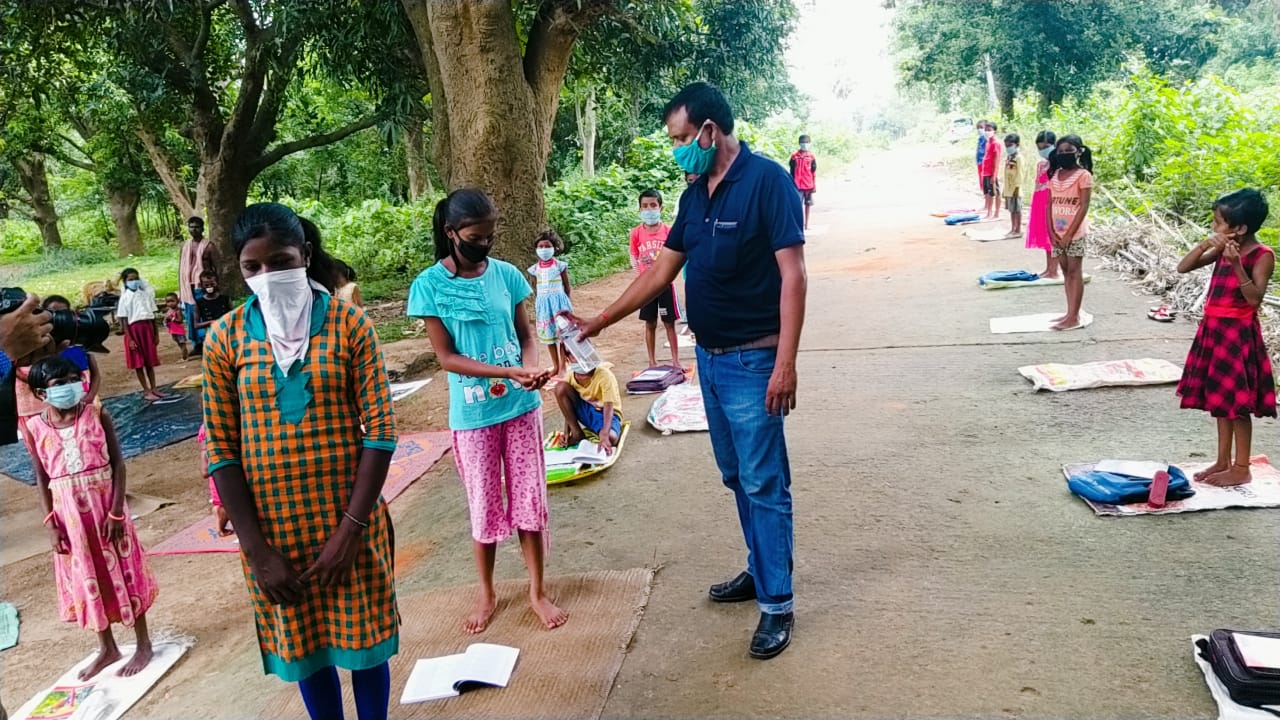
She and her team keep updating the audio capsules with the learning content so that the children do not get bored. They identified villagers who would step in to continue the sessions. The villagers were happy to, as they were reluctant to have ‘outsiders’ come into the village.
In the meanwhile, somewhere in the Mokhada Block, the children are winding up for the day, singing the last line to their school anthem, Nisargat laple aple guru…Our teachers are hiding in Mother Nature…
Also Read: The village schoolmaster: Why Chhattisgarh’s Ashok Lodhi is called Cinema Babu by a village.

